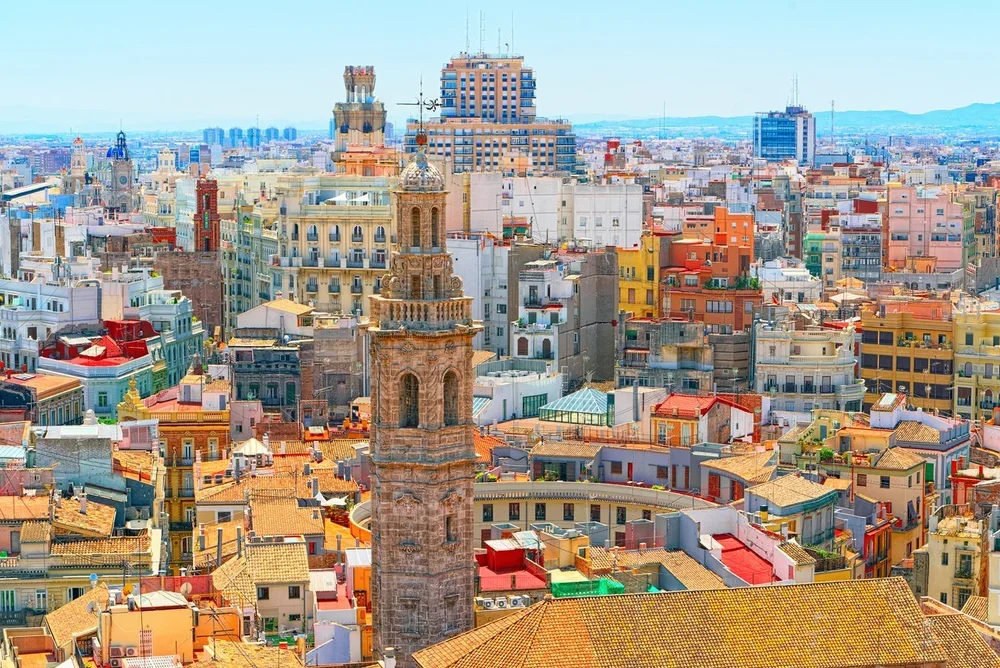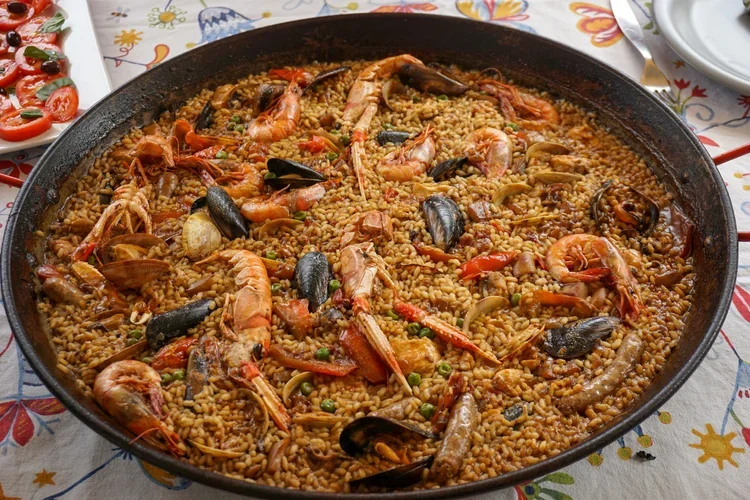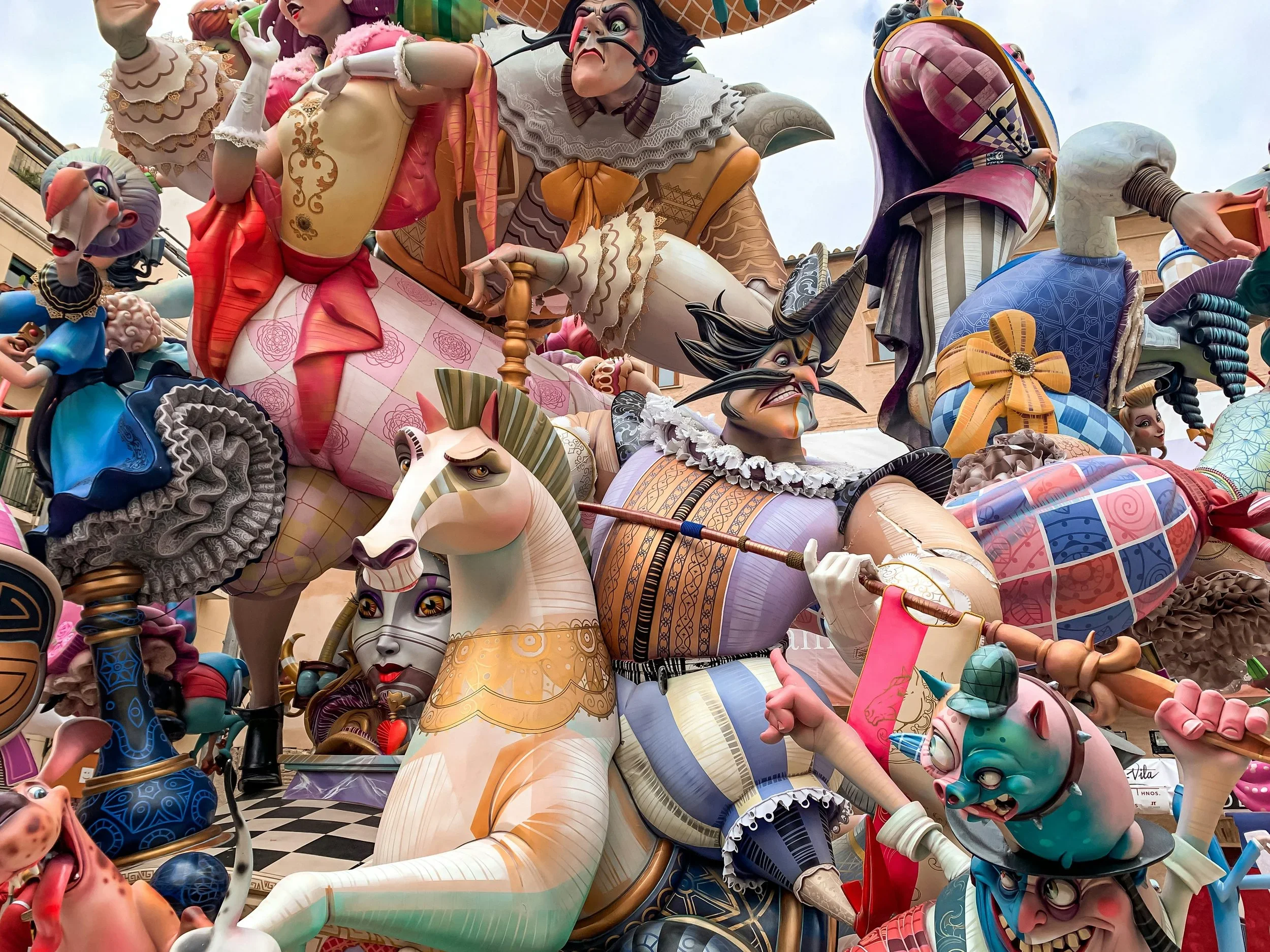Valencia isn’t just “the other Spanish city” — it’s got grit, it’s got soul, and it doesn’t try too hard to impress you. This is a city where you eat paella where it was born, drink like a local, and then stumble into culture that feels lived-in, not curated. Here’s four messy, flavorful, and very real days.
Day 1 – Fire, Rice, and the Streets
In Valencia, rice is religion, and the streets are the real cathedral.
La Pepica (Paella on the Beach) – Forget the tourist traps in the old town. Paella here is a birthright, and La Pepica, right on Playa de la Malvarrosa, has been dishing it since Hemingway days. Order the seafood paella, don’t rush it, and let the beach air do its thing.
El Cabanyal Neighborhood Walk – Once rough around the edges, still defiantly local. Fishermen’s houses with peeling tiles, street art, and old ladies sitting in the doorway watching life pass. No filter, no bullshit.
Casa Montaña – A 19th-century tavern in Cabanyal that hasn’t changed much — nor should it. Vermouth, salted cod, jamón that will stop you mid-sentence. You’re here for the vibe as much as the food.
Radio City Bar – At night, downtown comes alive. Flamenco one night, reggae the next, maybe some Afrobeat thrown in. It’s sweaty, loud, chaotic — exactly how you want Valencia after dark.
Day 2 – Markets, Blood, and Oranges
To understand Valencia, you’ve got to eat its guts, smell its citrus, and wander its labyrinths.
Mercado Central – A sensory overload. Mountains of oranges, glistening fish, snails wriggling in crates. Grab a horchata and fartón pastry while you watch old men haggle over eels.
Restaurante Navarro – Family-run, home-style, no pretension. Their arroz al horno (oven-baked rice) is local comfort food — heavy, soulful, meant to be eaten slowly.
La Lonja de la Seda (Silk Exchange) – Gothic architecture that tells you Valencia once ruled the Mediterranean trade game. It’s beautiful, imposing, and slightly eerie if you catch it when it’s quiet.
Café de las Horas – A cocktail bar that looks like a cathedral crossed with a drag cabaret. Their agua de Valencia — cava, orange juice, vodka, gin — is lethal, so pace yourself.
Day 3 – The Old, the New, and the In-Between
Valencia lives in the cracks between futuristic spectacle and stubborn tradition.
Turia Gardens (Jardín del Turia) – A dried-up river turned into a 9-km park. Locals bike, kids play soccer, couples kiss under palm trees. It’s the city’s vein, and it’s very much alive.
Ciudad de las Artes y las Ciencias – Santiago Calatrava’s futuristic playground. It’s bold, almost alien, but somehow fits. The science museum and oceanographic park are worth losing hours in.
Restaurante Rausell – A local classic near the center. Grilled monkfish, arroz meloso (soupy rice), the kind of kitchen that’s been quietly brilliant for decades.
Jimmy Glass Jazz Bar – Dark, intimate, real jazz — the kind of place where you forget what time it is. One of Europe’s best-kept secrets for music lovers.
Day 4 – Sun, Sand, and Soul
The Mediterranean isn’t just backdrop here — it’s Valencia’s heartbeat.
Patacona Beach – Skip the crowded main strips and head here. Wide sands, laid-back beach bars, families grilling sardines. It’s everyday Valencia at its most honest.
Casa Carmela – Old-school paella spot near the beach, still cooking with wood fire. You taste the smoke, the tradition, and the stubborn refusal to modernize.
IVAM (Institut Valencià d’Art Modern) – The city’s contemporary art museum. Rotating exhibits that challenge, provoke, and remind you Valencia isn’t stuck in the past.
Café Negrito – End in El Carmen, the old quarter’s nightlife heart. Negrito is always packed, always loud, always spilling into the square. Grab a gin tonic, watch the crowd, and let Valencia close the curtain.

















